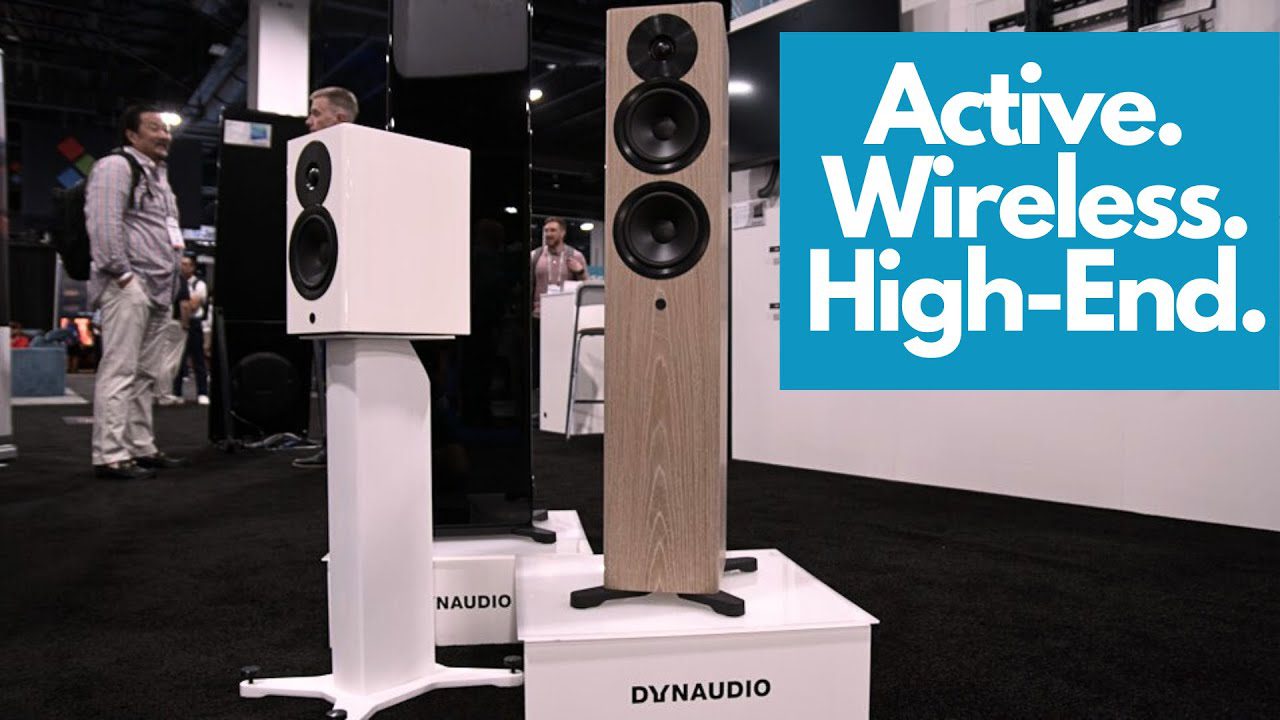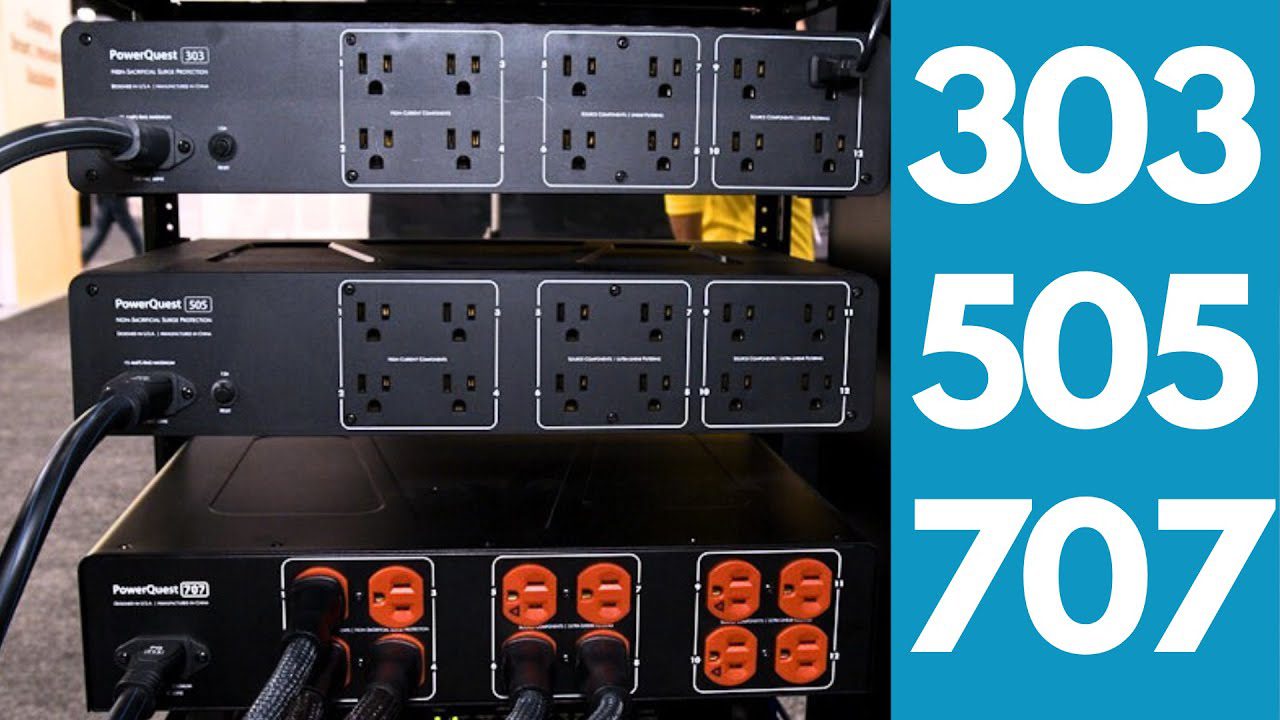
E.F. Schumacher’s famous 1973 book ‘Small is Beautiful’ never seemed to have resonance in the world of high-end audio. We like our audio equipment big and heavy, even if the reasons for such scale are at best dubious. But when it comes to Gold Note’s DS‑10 combination DAC and preamp and the matching PA‑10 stereo power amp, small really is beautiful: big amp believers, you need to come to terms with this!
Both Gold Note products are half-sized designs, in the 10 series chassis that Gold Note has used so well in the recent past. The DS‑10 is a combination digital preamplifier with DAC, network streaming connectivity, a Bluetooth receiver, and its own headphone amplifier. From the front, aside from the remote eye and the 6.35mm headphone jack, it looks functionally identical to the PH-10 phono stage (tested in Issue 153), including that easy-to-read front panel display. However, the PH-10 phono stage has no means of connecting to the DS‑10 as this preamp only features digital inputs; a DS‑10 Plus model with an analogue audio line input is also available for a small premium.

The streaming section is very similar to the IS-1000 (tested in Issue 180) in design and functionality. It’s effectively navigated by Gold Note’s own GN Control app (MConnect Control for Android users), although it can talk Apple AirPlay and Spotify Connect, is Tidal, Qobuz and Deezer-chummy, and Roon Ready. Where it differs fairly dramatically from the IS-1000 is its use of what Gold Note calls its ‘Chameleon’ DAC. Just as the PH-10 has a facility to change its tone curve to suit the recording, so the Chameleon DAC can adjust EQ (in this case, the low-pass filter), de-emphasis curve and output power. These parameters are shown as bars on the display, allowing 192 step fine-tuning to marry the output of the DS‑10’s DAC to suit your musical tastes, your power amplifiers, and your loudspeakers. There are three preset options, too, which allow you to tailor the sound to suit different musical sessions, different listeners’ tastes, or listening sessions at different times of the day.
Meanwhile, the PA‑10 is a really clever design for the wannabe upgrader. It’s a fully balanced Bridge-Tied Load design that facilitates really easy bridged mono mode. This turns the 75W stereo chassis into a 150W design that doubles its power into four-ohm loads, meaning a pair of them can deliver up to 600W into four ohms. It also features an adjustable damping factor, allowing the amplifier to adapt to different loudspeakers; the default option works for most large loudspeakers, while the ‘low’ setting works best for high-sensitivity designs and small monitor models.

Bridging involves the throwing of a switch on the rear panel (next to the damping factor and balanced/single-ended switches, all three have little blue LED indicators), while connecting the PA‑10 upstream to other Gold Note models is easy thanks to the ‘GN Link’ connector. This is a 12V sync/trigger system that allows a Master/Slave mode for powering up and down electronics in order.
Gold Note have not tried to squeeze too much into the PA‑10 box. A 75W power amplifier as standard, it can nevertheless deliver 150W into four ohms and 300W into two ohms (in bridged mono mode, the amps do not have a rating for a two ohm load). For a comparatively small Class AB design, the PA‑10 is surprisingly load-tolerant, too; OK, so the sort of punishing impedances that are a function of the highest of high-end loudspeakers are beyond any amplifier that doesn’t weigh as much as a car engine, but the highest of high-end loudspeakers aren’t normally combined with a £1,170 stereo power amp; especially one that could be delivered in a reasonably large shoe-box.
I’m not going to break up the band too much. The DS‑10 and PA‑10 (and especially the DS‑10 with a pair of PA‑10s) work extremely well as a team and their performance envelopes match one another well. But in a very real way, the DS‑10 is the star of the show. That isn’t to decry the performance of the PA‑10 – it’s a very good power amplifier in its own right – but the sheer flexibility and performance of the DS‑10 would make it a star of many a show. The DS‑10 is a fine digital hub with outstanding flexibility thanks to those three adjustable parameters, a streaming system that works smoothly, and a headphone amplifier stage that comes close to the performance of dedicated standalone headphone amps.
The Chameleon DAC does make the performance of the DS‑10 somewhat hard to pin down because it affords the Gold Note a degree of sonic flexibility unparalleled in most digital replay systems. However, there are common features to this flexible sound. It’s a very detailed sound, with excellent soundstage space and openness, held in place by a rock-solid bass foundation. If you think ‘bass foundation’ to mean a sort of big, overblown bass, the DS‑10 isn’t for you; that foundation is one of control and ‘right sized’ tonality. ‘Congo Man’ by Ernest Ranglin [Below The Bassline, Island] is a perfect barometer here; even the smallest amount of excess in the bass comes over as flabby, cone-flapping, one-note bass drone, but here the bass notes were tidy, ordered and extremely deep. You could change a lot of the parameters to fine-tune that sound, but the basic performance remains and that’s a good thing.
It’s good because it’s the perfect match for the PA‑10. The PA‑10’s sound is similarly clean, detailed, and dynamically taut yet controlled. Once again, bass is tighter and precise rather than ‘phat’ (although there is some flexibility thanks to the damping factor control) but still deep. Mono makes a big difference here; with soundstaging being ‘good+’ with one PA‑10 and ‘excellent’ with two, and that has a particular emphasis both in terms of stage size and openness, and solidity of instruments within that stage. A good example of how this stage size affects the sound is The Emerson String Quartet’s reading of Bach’s The Art of Fugue [DG]. This exceptionally clean early 2000s recording is quite close mic’d and while there is a soundstage, it’s seemingly not uppermost in the engineer’s list of priorities; it’s a recording all about the detail and the majesty of both composer and musicians. Nevertheless, it’s a good ‘more in the breach than the observance’ test of staging, and where a lone PA‑10 makes a good impression of the physical and musical interplay of four musicians, two amps really give that sound a sense of authority and physical space between instruments.
In a way, I’d argue that the DS‑10/stereo PA‑10 combination is more of a stepping-stone to the mono amps than a solution in its own right. In part, this is because for just a few hundred pounds more, Gold Note’s own IS-1000 integrated amplifier offers a lot of the same performance and sound quality standards, line inputs, and a more powerful amplifier stage. This isn’t a trouncing, as the DS‑10’s standalone DAC performance edges past that of the IS‑1000, the IS-1000 lacks a headphone amp and the PA‑10 is a slightly more graceful sounding amplifier than the integrated. Also, if you are performing a ‘bitza’ upgrade from existing equipment, then the DS‑10 is an obvious digital hub add-in to a system, but in the main if you are set on the Gold Note sound and it’s a choice between the DS‑10/stereo PA‑10 (with no future mono upgrade in the pipeline) or the IS-1000, I think most will go for the IS-1000. Adding in the second PA‑10, however, changes things dramatically. That extra dimensionality to the soundstage, the even greater control over the loudspeakers and its concomitant ‘grip’ on the bass, and the fluidity of midrange simply make so much more sense. All those elements are there in the PA‑10 (and, for that matter, the IS-1000), but they are more brightly lit when you go mono. And there’s even a PSU10 power supply for the DAC, so that should improve performance still further.

There’s a lot to like in the Gold Note DS‑10 and PA‑10 combination, especially when you get to the full triumvirate of DS‑10 and mono PA‑10s. This is a grown-up sound, free from lots of the fireworks and the instant gratification of ‘peakier’ sounding electronics so common today and especially at this price point. More importantly, the Chameleon DAC does live up to its name because it affords the preamp a lot of additional sonic flexibility. Small really is beautiful, after all!
TECHNICAL SPECIFICATIONS
- DS‑10 Streaming DAC preamp/headphone preamp
- Digital inputs: 1x RCA Coax, 2x Optical Toslink, 1x AES/EBU XLR, 1x USB-B DAC Input DSD512, 1x USB-A host, LAN, Wi-Fi, Bluetooth High Definition 5.0
- Audio outputs (DAC): stereo RCA @ 1Volt and balanced XLR @ 2Volt
- Audio outputs (preamp): Stereo RCA, balanced XLR; 1 6.3mm jack
- DAC: D/A Converter AKM AK4493 PCM up to 32bit/768kHz and DSD512 native
- Streamer: UPnP/DLNA/RoonReady, MQA, Airplay, vTuner, Tidal, Qobuz, Deezer, Spotify
- Supported servers: Supported audio formats (network): up to PCM 24bit/192kHz, AIFF (.aif, .aiff, .aifc), ALAC, WAV (.wav), FLAC, MP3, DSD64: DSF, DFF, Apple Lossless, OGG, Monkey’s, DSD64: DSF, DFF
- App support: “GN Control” for iOS and Mconnect Control” for Android
- Frequency response: 20Hz–20kHz +/-0.1dB
- Output impedance: 50Ω
- THD: 0.001% max
- Signal to Noise ratio: -125dB
- Dynamic range: 120dB
- Finishes: Brushed Aluminium in Black, Silver or Gold
- Dimensions (W×HxD): 20 × 8 × 26cm
- Weight: 4kg
- Price: £2,370
- PA‑10 power amplifier
- Power output: 75/150W @ 8/4Ω per ch. in stereo to 600W @ 4Ω per ch. in mono (BTL)
- Frequency Response: 10Hz–30kHz at +/-1dB
- THD+N: 0.05%
- Input sensitivity: 1,4V RMS on RCA and XLR
- Input impedance: 13KΩ RCA/XLR
- Finishes: Brushed Aluminium in Black, Silver or Gold
- Dimensions (W×H×D): 20 × 8 × 26cm
- Weight: 4kg
- Price: £1,170
Manufactured by: Gold Note
URL: goldnote.it
Distributed by: Airt Audio
URL: airtaudio.co.uk
Tel: +44(0)7548 796382
Tags: FEATURED
By Alan Sircom
More articles from this authorRead Next From Review
See all
Reiki Audio SuperSwitch Master Pro + Servant Pro
- Mar 27, 2024

Melco Audio N1-S38 music server
- Mar 27, 2024

Focal Utopia 2022 headphones
- Mar 27, 2024










